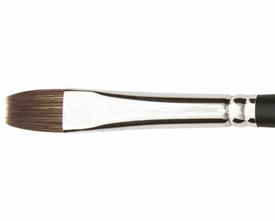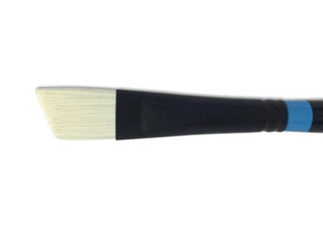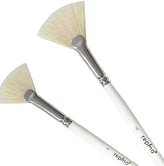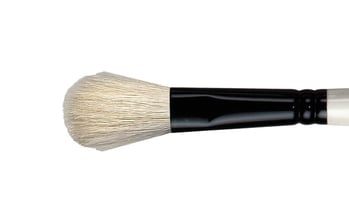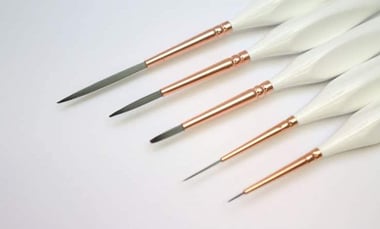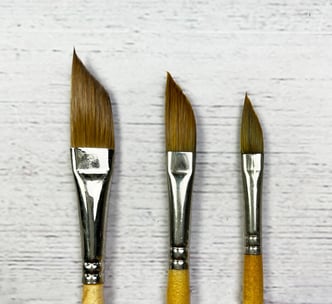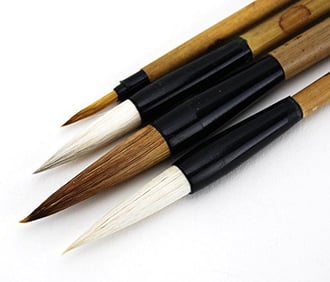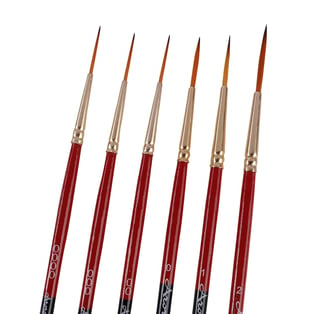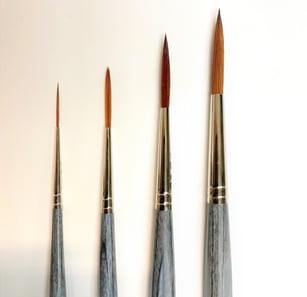Welcome to Health, Life and Art solutions
Highlighting specialized brushes for unique artistic effects.
Overview of Different Types of Paint Brushes
ARTS
Dr. Faiza A.R Khamissa
5/6/20247 min read


Types of Paint Brushes
For an Artist, Painting is a creative process that requires the perfect tools to bring imagination to life on canvas or paper. One of the fundamental tools in an artist's arsenal is the Paint brush. Understanding the different types of paint brushes available empowers artists to choose the perfect tool for their artistic vision. Let's explore the diverse world of paint brushes and learn about their characteristics, applications, and unique qualities.
Introduction to Paint Brushes
Paint brushes are indispensable tools for artists and calligraphers, allowing them to apply paint with precision and control. From delicate strokes to broad sweeps of color, each type of brush offers distinct advantages and effects. Whether you're a beginner or a seasoned artist, knowing the various types of paint brushes available can enhance your creative process and help you achieve your desired results.
Overview of Different Types of Paint Brushes
The world of paint brushes is vast, with each type serving a specific purpose. Let's take a closer look at some of the most common types of paint brushes used by artists worldwide.
1. Round Brushes
Round brushes are multipurpose and versatile tools with a pointed tip and a round ferrule. They are ideal for creating fine lines, intricate details, and controlled strokes. These brushes come in various sizes, making them suitable for both small-scale and large-scale work on Canvas or paper. Round brushes are a staple in any artist's toolkit, offering precision and flexibility in painting.
2. Flat Brushes
Flat brushes feature a rectangular-shaped ferrule and bristles that are arranged in a flat, straight line. They are perfect for covering large areas quickly and evenly. Flat brushes are commonly used for bold strokes, washes, and impasto techniques. They come in different widths, allowing artists to choose the appropriate brush size for their specific needs.
3. Filbert Brushes
Filbert brushes have a flat, oval-shaped ferrule that resembles a filbert nut, hence their name. These brushes combine the characteristics of flat and round brushes, making them versatile tools for various painting techniques. Filbert brushes are ideal for blending, shading, and creating soft edges. They are often used in portrait painting and landscape work to achieve subtle transitions and smooth textures.
4.Bright Brushes
Bright brushes are similar to flat brushes but have smaller bristles and a shorter ferrule. They are designed for precise control and are perfect for creating sharp edges and crisp details. Bright brushes are commonly used for painting intricate patterns, textures, and fine lines. They excel in acrylic and oil painting techniques where precision is paramount.
4. Angular Brushes
Angular brushes have a flat ferrule and angled bristles, allowing artists to paint with both broad strokes and fine lines. They are multipurpose tools that can be used for shading, highlighting, and creating dynamic masterpieces. Angular brushes are particularly useful for painting geometric shapes, curves, and contours. They offer excellent control and precision, making them popular among artists working in various mediums.
5.Fan Brushes
Fan brushes have a flat, fan-shaped ferrule and soft, fanned-out bristles. They are primarily used for blending, smoothing, and creating texture in paintings. Fan brushes are perfect for creating foliage, clouds, and other organic shapes. They can also be used for dry brushing techniques to add depth and dimension to artwork. Fan brushes are prized for their versatility and ability to create subtle, atmospheric effects.
6. Mop Brushes
Mop brushes have a large, rounded shape and soft, absorbent bristles. They are designed for applying washes, glazes, and broad areas of color. Mop brushes hold a significant volume of paint and water, allowing artists to cover huge surfaces quickly and evenly. They are often used for watercolor painting, where soft edges and fluid washes are essential. Mop brushes are also suitable for creating expressive, gestural marks in acrylic and oil painting.
7. Detail Brushes
Detail brushes, commonly referred to as liner brushes, feature long, slender bristles that taper to a precise point. They are designed for intricate work, such as fine lines, delicate details, and small-scale painting. Detail brushes excel in portrait painting, miniature art, and illustrative work where precision is crucial. They allow artists to add intricate patterns, textures, and embellishments to their artwork with ease.
8. Rigger Brushes
Rigger brushes, also called liner brushes or script brushes, have long, thin bristles that come to a fine point. They are designed for painting long, continuous lines with consistent width and intensity. Rigger brushes are commonly used for lettering, calligraphy, and fine line work in watercolor, ink, and acrylic painting. They offer exceptional control and flexibility, allowing artists to create expressive, flowing lines with ease.
9. Script Brushes
Script brushes are similar to rigger brushes but have shorter bristles and a more tapered tip. They are ideal for creating varying line widths and expressive strokes. Script brushes are usually used for lettering, script writing, and decorative flourishes in calligraphy and illustration. They offer precision and control, allowing artists to achieve elegant, flowing lines and intricate details in their artwork.
10. Dagger Brushes
Dagger brushes have a flat, angled ferrule and short, tapered bristles that come to a sharp point. They are versatile tools that can be used for bold strokes, fine lines, and expressive marks. Dagger brushes are ideal for creating dynamic shapes, textures, and patterns. They excel in expressive painting techniques where movement and spontaneity are valued. Dagger brushes are popular among artists working in acrylic, oil, and mixed media for their versatility and ability to create unique effects.
11. Sumi Brushes
Sumi brushes are traditional Japanese brushes used in sumi-e ink painting and calligraphy. They have a bamboo or wooden handle and soft, absorbent bristles made from animal hair. Sumi brushes come in various shapes and sizes, each suited for specific techniques and styles of painting. They are prized for their fluidity, responsiveness, and ability to create expressive, gestural marks. Sumi brushes are versatile tools that can be used for both traditional and modern-day artwork.
12. Specialty Brushes
In addition to the standard brush types mentioned above, there are many specialty brushes available for artists seeking unique effects and textures in their work. These include stippling brushes, comb brushes, spalter brushes, stippler brushes, and more. Specialty brushes offer endless possibilities for experimentation and creative exploration, allowing artists to push the boundaries of their artistic practice and discover new ways of expression.
Conclusion
Choosing the right paint brush is crucial for achieving the desired results in your artwork. By understanding the physical characteristics and applications of different types of paint brushes, artists can uplift their creative process and bring their artistic vision to life with precision and expression. Whether you're a beginner or a proficient artist, experimenting with various brush types can enhance your painting techniques and inspire new ways of exploration in your artwork.
Paint Brushes FAQs
1. What are the best types of paint brushes for beginners?
For beginners, it's advisable to start with a set of versatile brushes that include round, flat, and filbert brushes in various sizes. These brushes offer flexibility and can be used for a wide range of painting techniques.
2. How do I clean and maintain my paint brushes?
To clean paint brushes, rinse them thoroughly in warm, soapy water after each use. Gently reshape the bristles and allow the brushes to air dry completely before storing them upright or lying flat.
3. Can I use the same brushes for different types of paint?
While some brushes are suitable for use with multiple types of paint, it's best to use separate brushes for oil-based, acrylic, and watercolor paints to avoid cross-contamination and ensure optimal performance.
4. What is the difference between natural and synthetic paint brushes?
Natural paint brushes are made from animal hair, such as sable, hog, or squirrel, and are prized for their softness, absorbency, and ability to hold paint. Synthetic paint brushes are made from nylon or polyester and are more durable and affordable than natural brushes.
5. How often should I replace my paint brushes?
The lifespan of a paint brush depends on factors such as frequency of use, care, and quality. With proper maintenance, high-quality brushes can last for years, while cheaper brushes may need to be replaced more frequently. Inspect your brushes regularly for signs of wear and damage, such as frayed bristles or loose ferrules, and replace them as needed.






